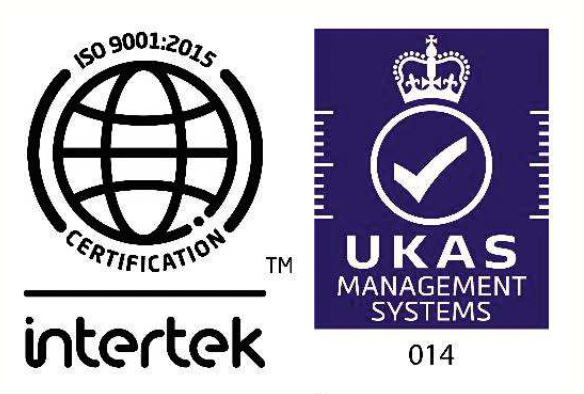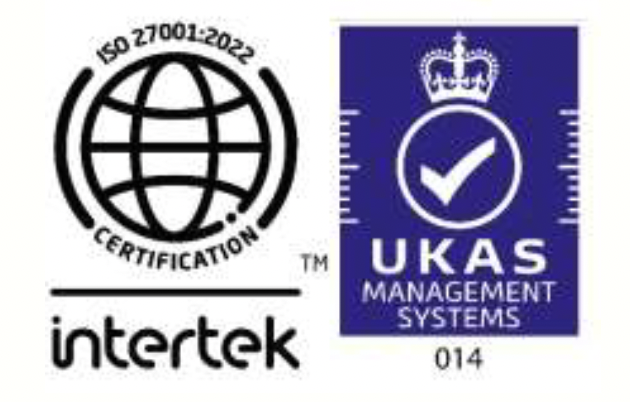SOC 2 Service Trust Categories
- Security. Information and systems are protected against unauthorized access, unauthorized disclosure of information, and damage to systems that could compromise the availability, integrity, confidentiality, and privacy of information or systems and affect the entity’s ability to achieve its objectives.
- Availability. Information and systems are available for operation and use to meet the entity’s objectives.
- Processing integrity (over the provision of services or the production, manufacturing, or distribution of goods). System processing is complete, valid, accurate, timely, and authorized to meet the entity’s objectives.
- Confidentiality. Information designated as confidential is protected to meet the entity’s objectives.Privacy. Personal information is collected, used, retained, disclosed, and disposed of to meet the entity’s objectives.
SOC 2 FAQs
-
What is the benefit of hiring a SOC 2 consultant?
A successful SOC 2 consultant understands the client organization’s business context, service commitments, information systems, and risks, and designs a bespoke SOC 2 implementation roadmap that ensures optimum security and successful certification.
SOC 2 certification focuses on managing customer data securely based on Trust Services Criteria namely security, availability, processing integrity, confidentiality, and privacy. It has 290+ requirements called point of focus.
Here’s why you might need one:
Expertise and Knowledge
The journey of SOC 2 requires expertise in a range of cyber security domains that cut across technology, human resources, physical, supplier security and governance expertise. With so many domains involved, hiring a SOC 2 consultant can reduce your learning roadmap as an organization.Scoping the environment
Scoping the engagement in terms of systems, locations, functions, service providers and trust criteria is a key aspect of starting the SOC 2 journey. A SOC 2 consultant can bring their expertise to define the scope appropriately.Gap Assessment
A SOC 2 consultant will perform a gap analysis to identify where your current practices fall short of SOC 2 requirements, providing a clear roadmap to compliance. A gap analysis will result in determining the ‘applicable’ and ‘not applicable requirements with suitable justifications.Implementation of Policies and Procedures
A SOC 2 consultant will design, and define all policies and procedures as per applicable controls. For each of the 5 trust criteria, there is a need to define policies and procedures.Implementation of Secure Practices
A SOC 2 consultant will ensure policies turn into actual practices. This is through the handholding of teams in the organization to ensure they indeed follow these practices.Implementation of Secure Configurations
Depending upon your infrastructure (cloud or on-prem or a hybrid of both) the SOC 2 consultant will ensure that all configurations are optimized for security.Risk Management Advisory
A gap assessment will several issues or vulnerabilities, and a SOC 2 consultant will provide specific advice to reduce the risk.Third-Party Risk Assessment
A SOC 2 consultant can evaluate the risks associated with suppliers, and provide actionable insights and recommendations.Penetration Testing
A SOC 2 consultant can perform testing of your Infrastructure and provide recommendations to reduce the risk.Training and Awareness
A SOC 2 consultant will provide training to your staff, ensuring your team understands both the standard and implementation requirements.Continuous Monitoring
After the implementation process is complete, the SOC 2 consultant can assist in managing and monitoring the governance process as well as reporting the degree of effectiveness.Managing Certified Public Accountant (CPA) auditors
Once the organization has prepared and is ready with the Implementation, there are several Q&A sessions between the clients and the CPA auditors. The SOC 2 consultant can make the journey easy by responding to several of these questions on behalf of its clients.
In summary, engaging a SOC 2 consultant will not only improve your security posture but also reduce the time to achieve SOC 2 attestation. While you focus on your business, the SOC 2 consultant can ensure success with SOC 2 certification, thereby saving valuable business hours and winning more business opportunities for its clients.
-
Who needs SOC 2 report?
- SOC 2 compliance is applicable to any service organization, that process or store customer data in their network.
- Examples of these providers include SAAS, PAAS, IAAS services organizations, business process outsourcing, and software service firms.
-
Who attests or can issue SOC 2 reports?
US-based Certified Public Accountants (CPA)
-
What is the difference between Type 1 and Type 2 report?
- SOC 2 Type 1 report is issued upon demonstration of 'control design', whereas SOC 2 Type 2 is issued upon a demonstration of control operating effectiveness.
- SOC 2 Type 1 can be achieved in 2-3 months, whereas Type 2 takes 4-6 months. These values are based on a reasonable approach to successful implementation.
-
What is the difference between a qualified and unqualified report?
- An unqualified report is one in which the auditor has no exceptions or deficiencies to report, thereby indicating that the designed controls are effective.
- A qualified report is one in which the auditor reports one or more exceptions or deficiencies.
-
What is the benefit of SOC 2 for service organizations who implement them?
SOC 2 is synonymous with security best practices. When an organization implements SOC 2 it has established a governance program that is driven by management participation and sponsorship. Most organizations nominate a CISO or a risk and compliance manager to drive this program.
-
What is a bridge letter?
Bridge letter is a self-attestation of ‘internal control effectiveness’ by the service organization management representative, for a period not covered in the attestation report.
For instance, if a service organization was attested for Jan to June 2022 and then again, the same period for 2023, the service provider can use the bridge letter for the intervening period, in this case July to Dec 2022.
-
SOC 2 Conversation
-
Frequency Asked Questions in the context of three players – a SOC 2 customer, SOC 2 consultant and a CPA.
Mike: A representative of the organization seeking to implement SOC 2
Carol: A SOC 2 Consultant, who assists in SOC 2 implementation
Linda: Certified Public Accountant (CPA), the auditor who will perform the final audit and will issue a SOC 2 report
Mike:Can you explain what SOC 2 is and why it's important?
Carol:SOC 2 stands for System and Organization Controls 2. It’s a framework developed by the AICPA to help organizations demonstrate they manage customer data securely, based on trust service criteria like security, availability, processing integrity, confidentiality, and privacy.
Linda:From an auditor’s perspective, SOC 2 is about validating your organization’s ability to safeguard data consistently, which is critical for building trust with your clients.
Mike:What exactly does a SOC 2 consultant do?
Carol:My role as a consultant is to guide your organization through the SOC 2 implementation process. I help you identify gaps in your current processes, recommend controls to address them, and ensure you’re ready for the audit.
Linda:And when I come in as the auditor, having a consultant involved makes the process smoother because the groundwork for compliance is already solid.
Mike:So, where does Linda come in?
Linda:As the SOC 2 auditor, I evaluate your organization’s controls and issue a SOC 2 report. I don’t assist with implementation—that’s Carol’s job—but I ensure your controls meet the SOC 2 requirements.
Carol:It’s a collaborative process—my work gets you prepared, but Linda’s independent evaluation ensures your controls meet industry standards.
Mike:How is SOC 2 different from SOC 1?
Carol:SOC 1 focuses on financial reporting, while SOC 2 addresses data security and operational controls. SOC 1 is typically for organizations that impact their clients’ financial statements. SOC 2 is more relevant to technology and service companies.
Linda:If your business handles sensitive data but doesn’t directly affect financial reporting, SOC 2 is almost always the better choice to meet client demands.
Mike:What’s the difference between a SOC 2 Type 1 and Type 2 report?
Linda:A SOC 2 Type 1 report evaluates the design of your controls at a specific point in time. A SOC 2 Type 2 report evaluates the operating effectiveness of those controls over a period, typically six to 12 months.
Carol:If your clients are asking for long-term assurance, they’ll likely prefer a Type 2 report, as it shows consistency and reliability over time.
Mike:Is SOC 2 compliance the same as SOC 2 certification?
Carol:Not exactly. There’s no official "SOC 2 certification." Instead, your organization receives a SOC 2 attestation report. SOC 2 compliance means your controls meet the requirements, but the report is what demonstrates this to clients.
Linda:And remember, the attestation is more rigorous because it’s based on a detailed audit, making it a reliable proof of compliance.
Mike:What makes an organization SOC 2 compliant?
Linda:A SOC 2 compliant organization has implemented controls that align with the trust service criteria and has undergone a successful audit to confirm their effectiveness.
Carol:It’s about more than just passing an audit—it’s about embedding a culture of security and compliance throughout your organization.
Mike:What’s the difference between a qualified and unqualified opinion in a SOC 2 report?
Linda:An unqualified opinion means your controls fully meet SOC 2 requirements. A qualified opinion indicates deficiencies in your controls that need to be addressed.
Carol:A qualified opinion doesn’t mean failure, but it does highlight areas for improvement that you’ll need to address before clients gain full confidence.
Mike:What’s the role of the AICPA in SOC 2?
Linda:The AICPA developed the SOC 2 framework and sets the trust service criteria. Only CPAs like me, or firms affiliated with the AICPA, can issue SOC 2 reports.
Carol:Their role ensures that the framework is consistently applied across industries, which is why SOC 2 reports are trusted globally.
Mike:Who’s authorized to sign a SOC 2 report?
Linda:Only licensed CPAs or CPA firms can sign and issue SOC 2 reports.
Carol:This guarantees independence and integrity, which is crucial when your clients rely on the report to evaluate your organization.
Mike:What’s a SOC 2 bridge letter?
Linda:It’s a letter issued by the service organization like yours Mike, to cover the gap between the end of your audit period and a client’s need for assurance. It essentially states that there have been no significant changes to your controls during that time.
Carol:It’s particularly useful for organizations with clients who require ongoing assurance before your next audit cycle begins.
Mike:Who’s responsible for signing the bridge letter?
Linda:The same CPA or firm that issued your SOC 2 report signs the bridge letter.
Carol:This ensures consistency and gives clients confidence that the letter aligns with the conclusions of your original audit.
Mike:This has been so insightful! I feel much more confident about the SOC 2 process.
Carol:That’s great to hear. With the right preparation, you’ll be able to meet your compliance goals.
Linda:When the time comes, we’ll ensure your SOC 2 report reflects the hard work you’ve put into meeting the criteria.
© 2025 www.coralesecure.com. All rights reserved | Privacy Policy

